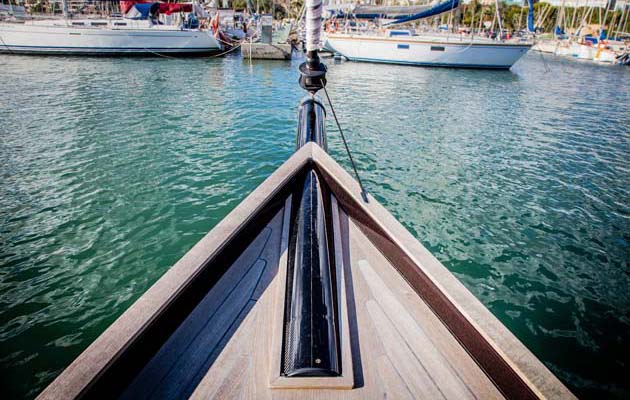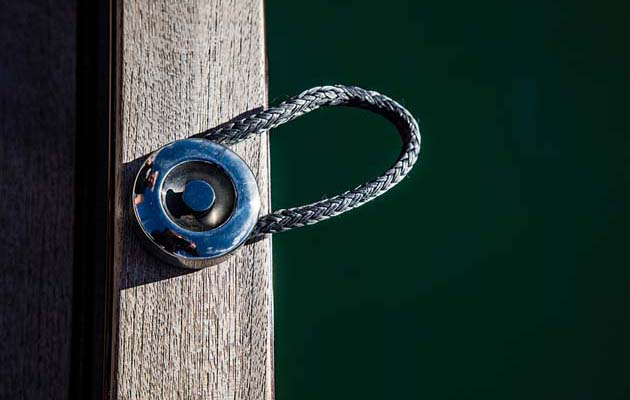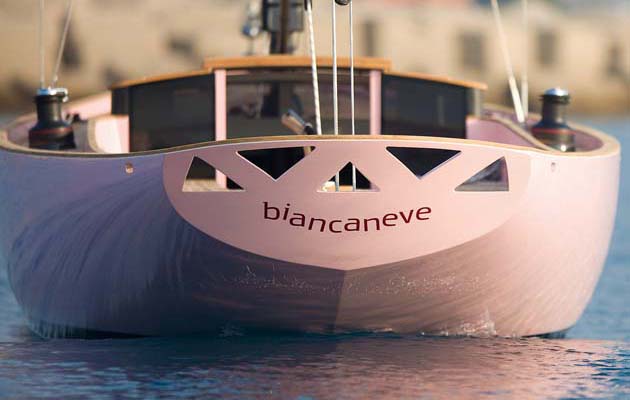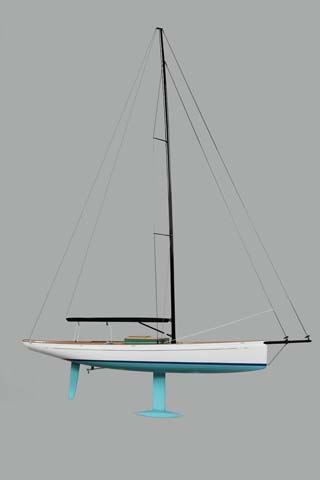The reinvigorated Wally Nano may now have the performance to match its killer looks. This MkII version marries Italian styling with Dutch workmanship to extraordinary effect.
Eight years ago Wally did what it does best and stunned the sailing world with the launch of its exuberant, incomparable ‘Nano’. The Andre Hoek designed masterpiece, the first of which was the bling, pastel-pink cover star of our January 2009 issue, pushed the limit in terms of size and price of what was conventionally deemed a daysailer.
Three Nanos were built in Turkey, however, for a variety of reasons, the project never took off. So What happened? Such flamboyance doesn’t simply disappear.
Well, the Wallynano is back with a bang. This MkII version is a collaboration between Wally’s Luca Bassani, designer Andre Hoek and the traditional Dutch yard Doomernik.
She remains painfully good-looking – Hoek is the master of the modern classic. A pilot cutter influenced plumb bow, lengthy sprit and low, squared coachroof set off her retro style, finished by that elegantly overhanging counter stern.
These classic lines now meet contemporary construction and renowned Dutch attention to detail. The MkII version is also around 300kg lighter than the original.
Price: €285,000 ex VAT
LOA: 11.4m
LWL: 9.0m
Beam: 2.6m
Draught: 1.8–2.6m
The Nano is designed to fit in a 40ft container so it can be shipped around the world. Its mast splits into two sections and the keel bolts can be accessed easily.
The first production boat is going to Japan, the second to Italy. And two more were sold in late November.

Wally Nano, Hoek designed 37 foot daysailer
We sailed her with her builder Joop Doomernik in Palma. He has clearly applied his Dragon-honed woodworking skills to her interior and told us he spent a year simplifying the Nano.
Doomernik has the original mould so the hull is the same, but the details are different – she has been lightened and cleaned up. Specialist composite workers from two different America’s Cup syndicates oversaw the structural part of the carbon fibre sandwich build.
“It’s now 2016 composite standards not 2008 Turkish standards,” said Doomernik. “Simpler and more efficient.”
The keel and bulb have been optimised for improved stability. The improvement in construction technique allowed 100kg of weight saving to be added to the bulb.
A 2.2m keel is advised for those who opt for the self-tacking jib, or a 2.6m draught version is available for extra righting moment.

The towering columns of Palma’s gothic cathedral overlook the lofty sailplan of the Nano
A big modification to this MkII version is the removal of the Magic Trim hydraulic cylinders – the push button sheeting system used on most Wallys. The benefit of taking these pistons out is the space it frees up and the weight it saves (130kg of hydraulic oil).
One look at the mainsheet purchase system now used, however, had me wondering whether Wally founder Luca Bassani would approve. One of the key design principles of Wallys is that they can be push-button sailed solo.
Also the self-tacking jib is now only an option and the test boat had a slightly overlapping genoa.
“We decided to give it a bit more performance by having a small overlap in the tracks and changing the design of the chainplates,” said Hoek Design’s Vittorio Papa. So it is evident the Nano is no longer the push-button machine she was.
Doomernik has also removed the diesel-powered saildrive and replaced it with electric propulsion as standard. The 6kW OceanVolt motor provides around seven hours autonomy.

The modern day throttle control. The only problem with silent propulsion is that you may not know if it is accidentally engaged!
The only way to charge the test boat is currently from shore power. As she is a daysailer, it is argued that only up to an hour’s motoring time is normally sufficient.
Silently departing dock with no emissions is a worthy benefit. An integrated smart system means the battery information can be streamed to a tablet or phone.
The interior shows a superb standard of finish, which all starts from high quality composite work. Most of the interior including the seating is structural.
The keel grid is built up of 33 layers of carbon and is engineered to be as low-profile as possible to keep the floorboards low. “The improvements are very much what you can’t see – in the core of the boat,” said Papa.
So this is surely the ultimate luxury gentleman’s daysailer? A premium-priced toy that is all about an intoxicating upwind ride? Or so I thought…

Wally Nano, Hoek designed 37 foot daysailer
Gusty conditions with wind across the swell made for an uncomfortable motion during our test. There were no instruments fitted but I’d estimate the breeze was between 16 and 25 knots.
The Nano has a tall carbon mast and plentiful canvas (we didn’t reef), so there was an appreciable load on the tiller when heading upwind and we had to feather the main through the gusts.
The helming position is brilliant when sailing to weather, however, as I feared, the mainsheet purchase, which is led from boom to cockpit sole and has an extra fine trim purchase section, is inadequate when she’s powered up.
The yard is planning to add a mount to raise this off the sole to a better cleating angle, but I still wonder if a push-button system would suit this style of boat better.
But having said all that, the rudder never lost grip or felt like it was going to. It is mounted far forward, which, together with her long, narrow, traditional hull shape, means you can sail her on her ear without fear of broaching.

The ‘W’ for Wally still forms the centrepiece of the Nano’s wonderful pilot cutter inspired transom.
Having satisfied my curiosity over how lovely the Nano might be to sail to windward, we headed downwind and unleashed the kite. She turned from politely luxurious to positively potent, a carbon torpedo that provides a pulsating ride in a breeze.
She surfed handsomely on the 1.5m swells, with wonderful balance and full control on the helm. The lightweight carbon build certainly fulfils its purpose.
Vittorio Papa said that she’ll do around seven knots upwind and up to 15 knots reaching – we may have hit the late teens that evening.
Here is an admirably pure design to guarantee sailing enjoyment. If she didn’t already feature in your wishlist before, the Nano should do now.


SeaSmart padeyes on the cap rail for hanging fenders. Push the central button (below) and these detach to be placed in alternative positions.


The lines are all led aft underdeck from the mast base. The clutches are sunk into wells with drain holes and there are tail lockers.

The smart, minimalist teak interior is suitable for day sailing and weekending. There are four usable berths and a vacuum heads with holding tank.

Not short on canvas: The Nano has a generous sail plan especially with the asymmetric hoisted.

Wally founder Luca Bassani sails the original pink Nano in 200.






